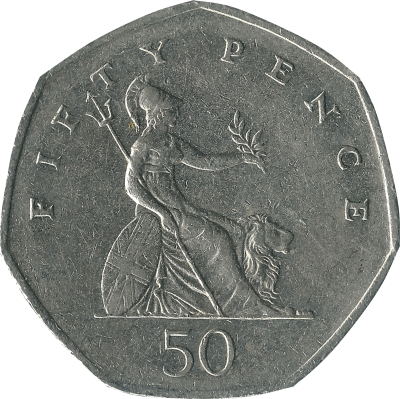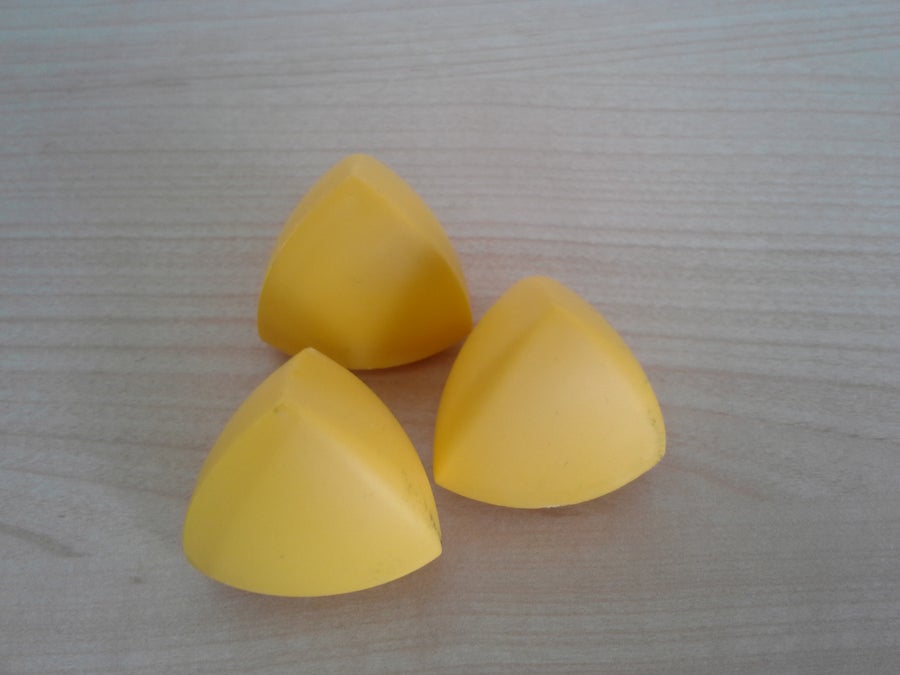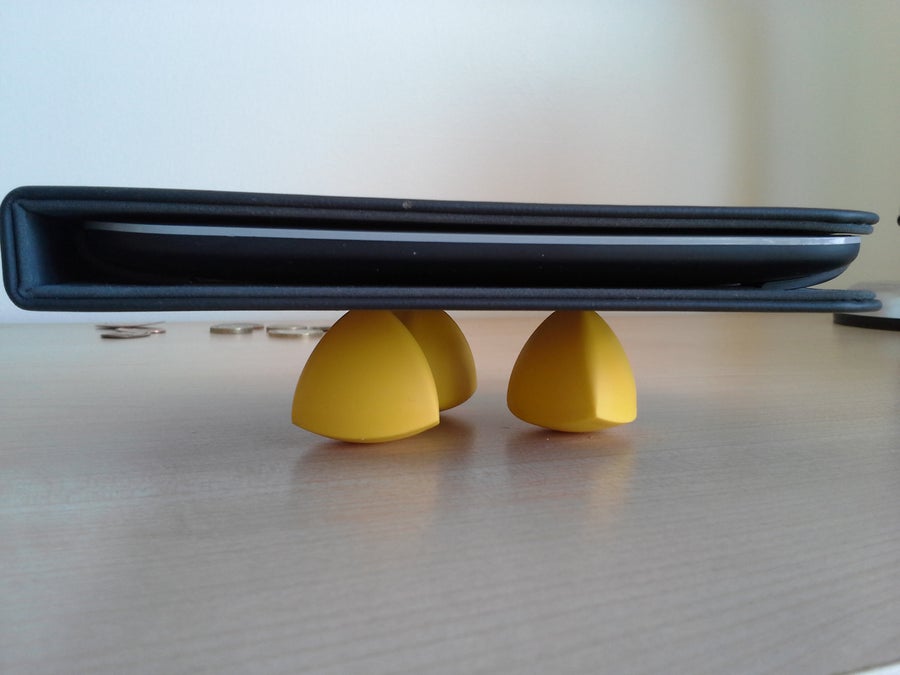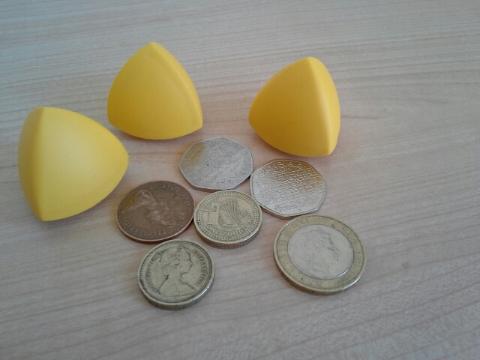This article was published in Scientific American’s former blog network and reflects the views of the author, not necessarily those of Scientific American
As I wrap up a trip to the UK, I reflect on the many objects of constant width I encountered here. I'll let Numberphile tell you a little more about objects of constant width.
Almost immediately after getting off the plane at Heathrow, I got some breakfast and some change in the form of metal shapes of constant width. That's right, all British coins are shapes of constant width. This isn't remarkable because circles have constant width, and most coins are circles. But the UK has non-circular coins that also have constant width: the 20 and 50 pence pieces are both rounded heptagons, part of a family of shapes of constant width called Reuleaux polygons.
On supporting science journalism
If you're enjoying this article, consider supporting our award-winning journalism by subscribing. By purchasing a subscription you are helping to ensure the future of impactful stories about the discoveries and ideas shaping our world today.

A 50 pence coin. It is protected by British Crown copyright, but I believe its appearance here falls under fair use.
Shapes of constant width are fun because you can roll things around on them just as smoothly as you can on circles, as Steve Mould demonstrated in the video above. They are also useful for drilling square holes and powering Mazdas as part of the rudely namedWankel engine. My favorite fact about shapes of constant width, which I learned while writing this post, is Barbier's theorem: if two shapes of constant width have the same width, then they have the same perimeter. Unfortunately, no two British coins have the same width, so I can't test it.
Two-dimensional objects of constant width are pretty nice, and I had fun trying to make sure I would get 20 or 50 pence coins as change whenever possible, but things got even more exciting when I went to Manchester to visit bronze Alan Turing and some of my friends from the British math(s) blog The Aperiodical. Katie Steckles, who also gave me my first taste of Marmite (verdict: not too bad, but I'm not going to rush out and buy any when I get home), gave me some 3-dimensional objects of constant width!

Three Meissner tetrahedra, solids of constant width. Tetrahedra by Maths Gear. Photograph by Evelyn Lamb.
It's pretty easy to make 3-d objects of constant width from 2-d objects of constant width by rotation, but the ones I have are even better because rotating seems like cheating, and these are not formed by rotation. They are called Meissner tetrahedra, and you can make one by "fattening up" a regular tetrahedron just right. It is conjectured, but still not known, that a Meissner tetrahedron is the solid of constant width with the smallest ratio of volume to diameter. (Here's a pdf of a paper about some of the interesting properties of Meissner tetrahedra, including the evidence for that conjecture.) They make a good e-reader stand.

With the support of some Meissner tetrahedra, the e-reader can glide gently across the desk. Image: Evelyn Lamb.
You can purchase your own cheerful yellow Meissner tetrahedra from Maths Gear. They have an amusing video about the objects.
Because Maths Gear is based in the UK and hence has prices in pounds, there is a conversion rate between interesting 2- and 3-dimensional objects of constant width. Specifically, you can exchange 30 2-dimensional non-circular objects of constant width (or 75 smaller ones) for three 3-dimensional non-spherical objects of constant width. What a country!

Several British objects of constant width. Image: Evelyn Lamb.
If you don't want to buy your own, or if you find these objects too British for you, especially on American Independence Day, check out the Coaster Rollers exhibit at the Museum of Mathematics in New York for some big, patriotic solids of constant width.